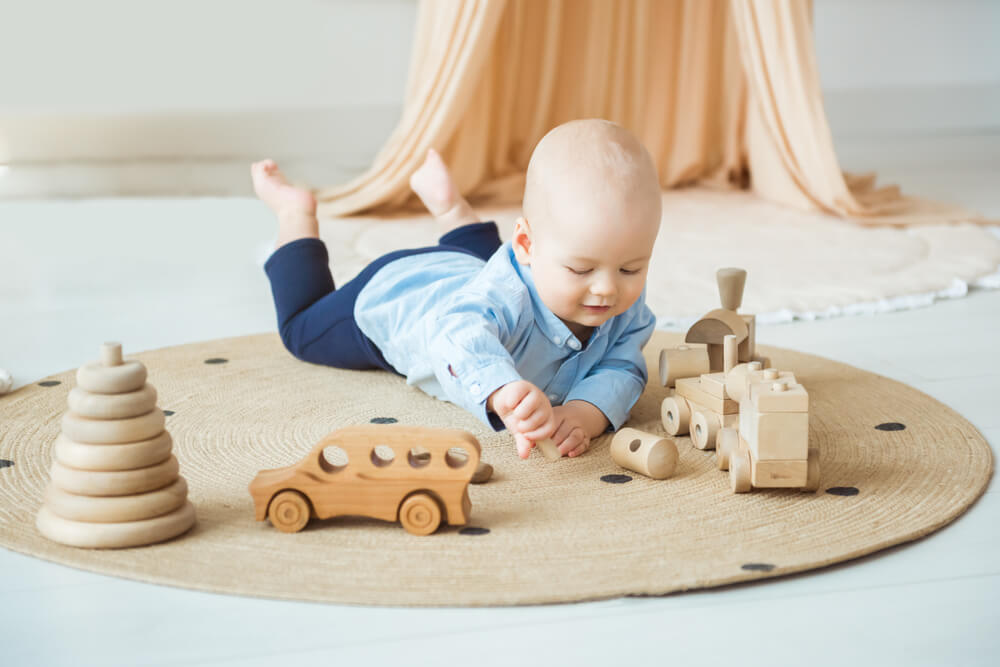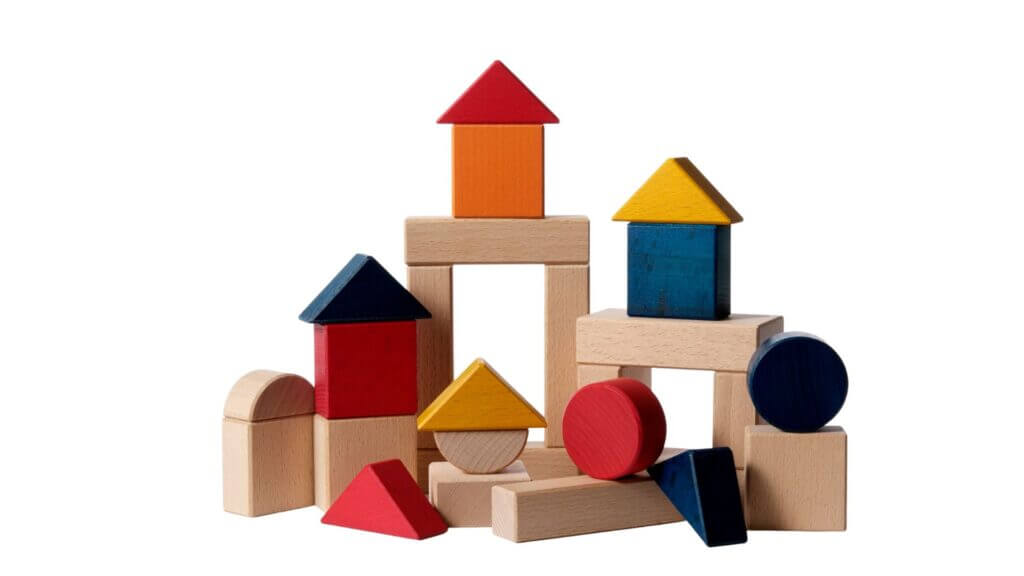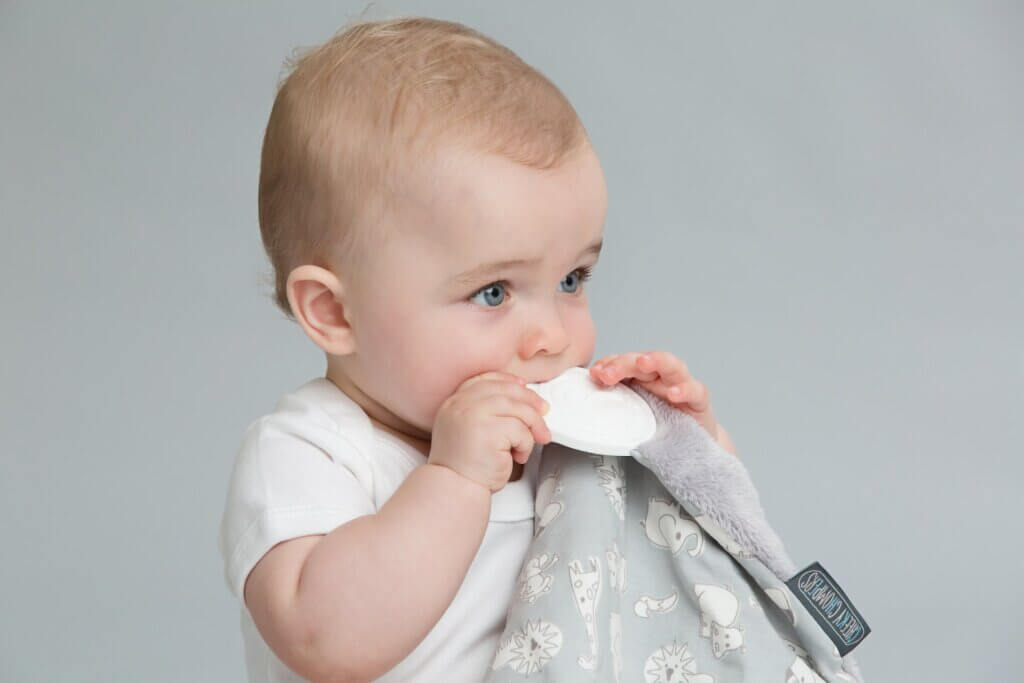Plastic Free Toys: Do Eco-Friendly Alternatives to Plastic Toys Exist?

Plastic toys are very common today for babies and kids and they spend most of their time with these toys, mostly also exploring them with their mouth by licking, chewing them, etc. It is necessary to ensure that materials used for making those toys must not contain any toxic elements that can raise health issues in children. It has been found by researchers that during the manufacturing process, different chemicals are added to plastic toys to make them flexible which could be harmful to kids, particularly babies who are most concerned.
Are Plastic Toys Safe for Babies?
Unfortunately, many parents do not know about the toxic effects of certain plastic toys, so it is essential to make them aware of plastic free toys that are both eco-friendly and safe for the kids. Parents should avoid giving plastic toys to their kids as the safety of the child matters the most.
In fact, a 2021 study by the Denmark Technical University (DTU) commissioned by the UN Environment Program showed that more than 100 chemicals found in plastic toy materials can pose health risks to children. These are chemical additives like plasticizers, used in toys to make them softer and provide elasticity. Further to plasticizers, also flame retardants and fragrances were found among the hazardous substances. The researchers recommended stricter international regulations so that safer alternatives are found to these harmful chemicals.
Related: Embracing Motherhood Sustainably with a Plastic-Free Pregnancy Test!
What are Eco-friendly Materials for Toys?
It has long been known that several chemicals used in plastic toys in different parts of the world can be harmful to human health. However, it is difficult for parents to figure out how to avoid plastic toys containing chemicals that may cause possible health risks to your children. You can buy toys made with materials that are an excellent alternative to plastic. Here are some examples:
- Wooden Toys
- Cloth Toys
- Bamboo Toys
- Natural Rubber Toys
- Food-grade Silicone Toys
- Recycled Paper Beads
- Paper toys
- Sustainable Board Games & Puzzles
- Natural Modelling Clay
These are no-plastic toys that give babies and toddlers the same enjoyment and avoid any health issues arising from the harmful effects of plasticizers.
Such toys are also in line with the Montessori philosophy because they are mostly made from natural materials, they are meant to be physically touched and explored with the children’s mouth, then with their hands as they grow up. They focus on building skills, including STEM learning, and encouraging indepence in your child. They are mostly based on real life (animals figures etc.) and do not have electronics or flashing lights.
9 Best Alternatives To Plastic Toys
Different materials can be a good alternative to plastic for making toys for babies and children which do not contain harmful plastic components. Most of these materials are obtained from natural sources and do not include any chemical components or harmful additives. Moreover, unlike plastic, these materials are biodegradable and do not contribute to environmental pollution after disposal. Some of the most popular eco-friendly alternatives to plastic toys are discussed as follows:
This post contains affiliate links, which means we may receive a small commission, at no cost to you, if you make a purchase through a link. This helps us continue the hard work we put into researching products and solutions.
1. Wooden Toys
Wooden toys are a very old and traditional form of toy making that has become more popular nowadays due to their environment-friendly nature and natural ingredients. The various advantages of wooden toys over plastic toys are mentioned below.
- Wood is a natural material that doesn’t produce any toxic effects.
- It can be beautifully crafted and designed in various shapes and sizes with attractive looks.
- Wood is biodegradable and recyclable which makes it eco-friendly.
- Wooden toys are more durable than plastic and not broken easily.
- Wooden toys do not require the addition of chemicals to make them flexible and moldable.
- Make sure that wooden toys do not contain any harmful colors in their painting or toxic sealants. Examples of the best non-toxic sealants (lacquers) are linseed oil and tung oil, both of which are safe for children.
See the range of wooden toys on:
Related: Why You Need to Use Eco-Friendly Phone Cases to Accessorise Your Mobile?
2. Cloth Toys
Cloth toys are also a traditional art form of toy making. They can be designed with attractive colors that can catch the child’s attention. They range from cloth teethers for babies, to ragdolls, puppets, cloth books or even soft blocks made from organic cotton.
The advantages of cloth toys are as follows:
- Cloth toys are soft and flexible, so suitable for a child’s tender skin.
- They avoid any scope of getting hurt by breaking or sharp edges.
- Cloth toys are mostly washable and repairable.
- Cloth toys are found in a variety of designs at a cheaper cost.
- Please note: make sure that the cloth comes from natural fibers (organic cotton, hemp, wool) and doesn’t contain harmful chemicals. Even better if these materials are certified by textile standards like OEKO-TEX® etc.
- When the cloth is made of natural fibers, it means it is biodegradable making it eco-friendly as it can be home composted at the end of its life cycle.
See the range of cloth toys on:
3. Bamboo Toys
Bamboo is a plant with a woody stem that is used for making different art crafts including toys. Unprocessed bamboo is a sustainable material because it is a fast-growing grass, it doesn’t require fertilizers or pesticides, and self-regenerates from its roots, so it doesn’t need to be replanted, nor does it need a lot of water to grow, making it a renewable and versatile crop.
Bamboo toys have a range of benefits in health aspects and safety for kids, some of which are mentioned as follows:
- They are strong and durable, but still provide some flexibility.
- They can be designed in various shapes.
- Bamboo is weather-resistant, moisture-proof, and insect resistant.
- Bamboo toys are also resistant to fungus and bacteria growth.
- Bamboo is biodegradable and therefore also home-compostable.
- Bamboo toys are mostly handmade without using any chemical components.
- As mentioned above for wooden toys, make sure that bamboo toys do not contain any harmful colors in their painting or toxic sealants. Examples of the best non-toxic sealants (lacquers) are linseed oil and tung oil, both of which are safe for children.
See the range of bamboo toys on:
Related: Why You Should Switch to Glass Baby Bottles?
4. Natural Rubber Toys
Rubber Toys are not only great fun for small children but they’re eco-friendly too. Natural rubber comes from a native Brazilian plant – Hevea brasiliensis – it is biodegrdable and therefore completely safe for your children to chew, stretch and play without facing any health issues. Natural rubber is sourced from the latex of rubber trees which is vulcanized and shaped into various products. Natural rubber is another sustainable and flexible material that many manufacturers prefer to use for baby and toddler teething toys. The advantages of natural rubber toys are mentioned as follows:
- Natural rubber is biodegradable and recyclable.
- It is non-toxic and free from harmful plastic components.
- It requires no artificial coloring or chemical softeners.
- It is naturally soft and flexible.
- Natural rubber toys are robust, weather resistant, and durable.
- Authentic 100% natural rubber toys represent one of the most environmentally sustainable choice, as they are completely free from plastic, silicone, petroleum, heavy metals, PVC, and phthalates.
Please note: make sure to ask the manufacturer if the material is 100% natural rubber as “rubber” can be also artificially made from a variety of polymers synthesized from petroleum byproducts, which provides the rubber its properties.
See the range of natural rubber toys on:
5. Food-Grade Silicone Toys
Food-grade silicone is obtained from natural silica and is used to make baby food containers, tethers, and toys that are safe for babies. It is soft and flexible but also can sustain chewing or biting strain for a long time. The benefits of food-grade silicone over plastic in making baby toys are mentioned below.
- Food-grade silicone should be free from chemical byproducts.
- Food-grade silicone toys are durable and temperature resistant.
- These toys are robust and flexible making them ideal for kids.
- Food-grade silicone toys promote a good grip on the baby’s hands.
- Food-grade silicone is a waterproof material and should not be affected by germs.
- Silicone baby toys are hygienic, lightweight, and easy to clean.
- Food-grade silicone is not biodegradable, because it is a synthetic man-made material, however it is less likely to break down than plastic and hence why many think that it is an eco-friendly material.
To some people, plastic-free toys are toys that do not include silicone either. This is because silicone is not completely inert and some low-grade silicone products are made with plasticizers, including phthalates (see the study through the link), that are endocrine disruptors and are detrimental to human health. Our recommendation is to be careful about this material and to check its composition with the manufacturer.
See the range of silicone toys on:
6. Recycled Paper Beads
Another no plastic toy idea for pre-school children is making recycled paper beads. These can be made using old magazines, newspapers or used wrapping paper. You can find many tutorials online that teach you how to make them and here below we posted an example which will help beginners. The beads can be used in DIY jewellery, home ornaments, wall hangings and other decorations. Such activities are both safe for your children, they stimulate their motoric skills and creativity, and last but not least, they are also environmentally sustainable.
Traditionally toothpicks or small wooden skewers are used to make these beads, however there are also some bead making kits that can be purchased online to make this activity even easier and more fun for everyone. Please note, that some of these paper bead rollers are made with a piece of plastic though.
Find recycled paper bead making kits on:
7. Paper Toys
In recent years as people are trying to avoid cheap plastic toys, paper toys have become more popular. They are usually made of paper that kids have to cut and place into a 3-D shape similar to the Japanese origami or you can find more durable versions that are made with cardboard and often include free apps for download to allow children to have some education digital learning fun, i.e.
Playper is one of such planet-friendly brands that has brought on to the market a series of educational toys for children aged 3-6. Their “The Curious Kingdom” and other toys are made from PlayperBoard™ – a plastic-free, cardboard based-material that is fully recyclable at the end of its life.
8. Sustainable Board Games & Puzzles
A part from children puzzles, which are generally a great idea for plastic-free toys, in recent years more and more plastic free educational toys are being launched that also teach about sustainability, recycling, the UN sustainable development goals, how to go green and start leading an eco-friendly lifestyle, all while having fun etc. These can be useful for rainy days or when the family plays together mostly during the festivities.
These can be:
- Memory Games
- Jigsaw Puzzles
- Board Games
- Card Games
- Party Games
Find eco-friendly games about sustainability on:
9. Natural Modeling Clay
Modeling clay is very popular among young children (i.e. Play Dough) and also teeneragers (i.e. the rising of popularity of slime) but unfortunately the majority of these products are made with synthetic materials that do not biodegrade. Furthermore, glitter is often added to slime to make it more colorful, shiny and more appealing, creating an environmental disaster as it is microplastics that pollutes our soil and waterways harming wildlife.
A lot of these clays on the market are made with polymers, resins, coloring agents and fillers. They don’t use a natural clay base, but a plastic, polyvinyl chloride (PVC) base. Stay away from polymer clay. PVC is known to contain dioxin, which is a proven carcinogen, and phthalates. We have mentioned phtalates already earlier in this article and we have linked a study that researches their impact on human health. A part from health related issues, polymer clay doesn’t biodegrade, on the contrary, it contaminates our natural environment.
Here are the benefits of using natural clay over synthetic clay in toys:
- Oil-based, water-based, and dough clays are generally safe for the environment and for kids
- They do not stick too much and irritate the skin
- They are hardly leave any residue
- They do not air-dry so they are reusable, particularly if they are kept in a container
- Dough clays can be done at home with recipes found online, saving you money.
See the range of natural clay on:
Conclusion
In the modern lifestyle, we are surrounded by plastic everywhere, so it’s not easy to find plastic-free toys. We all are aware of the harmful effects of plastic on the environment and parents are concerned about their kid’s safety and health aspects while playing with plastic toys. Researchers are working on alternative natural resources to replace plastic as much as possible. One area that can make use of plastic-free alternatives is the toy-making sector by making hygienic and eco-friendly toys for babies and children. By choosing plastic-free, biodegradable, natural alternatives over plastic, we can make our environment cleaner and safer for future generations.
—
Browse more articles related to plastic and microplastics around babies.
Browse the I’m Plastic Free platform to discover eco-friendly solutions for Babies & Kids.





Earthy_tweens
March 9, 2023 at 9:31 pmVery nice blog post it is informative, and I subscribed to this blog for all its future posts. There is some helpful information I think I must share here. Earthy Tweens offers the best selection of organic cotton children’s apparel, including organic cotton baby clothes.
I'm Plastic Free
April 19, 2023 at 9:05 amHi Earthy Tweens, thanks for your comment. We do not allow promotional links in this section, however you’re more than welcome to join our platform for free and it only takes a few minutes. Here is the link: https://www.implasticfree.com/join-the-plastic-pollution-solutions-directory/
Kind regards,
Simona